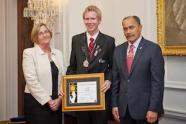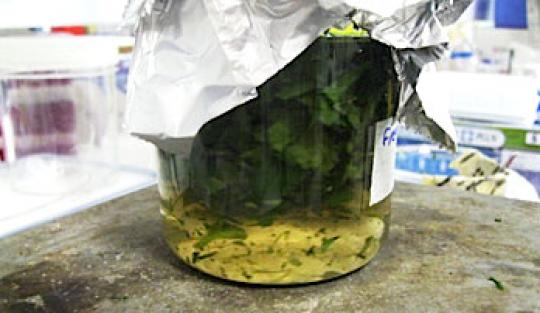Kawakawa leaf extract
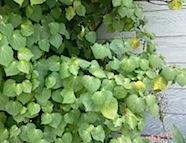
Introduction
Chris Ryan, a year 12 student at Howick College, knew kawakawa was widely used within rongoā Māori (traditional Māori medicine).
He was curious about whether there was also scientific evidence for this and decided to look into it.
Background
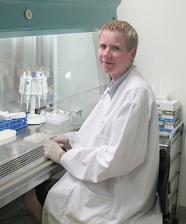
Chris found that there were only two scientific studies into kawakawa and neither suggested it had any significant medicinal properties.
In contrast, many sources discussing rongoā Māori described kawakawa as a medicinal plant with anti-inflammatory properties.
Chris spent the next two years finding a way to scientifically investigate the medicinal properties of kawakawa.
The project provided Chris with an opportunity to engage with members of the Māori community who believe and have observed as part of rongoā that kawakawa did have medicinal properties.
Technological outcomes
Aqueous kawakawa extract
Chris’s primary technological outcome was an aqueous kawakawa extract that at specific concentrations demonstrated an in-vitro (in-cell culture) anti-inflammatory response from a specific cell culture type.
A system for testing the anti-inflammatory properties of plants
The secondary technological outcome was a system for testing the anti-inflammatory properties of kawakawa extracts – and any plant extract. The cell viability assays* and the anti-inflammatory assays could be used with any plant extract.
* analysis to determine the presence, absence, or quantity of one or more components
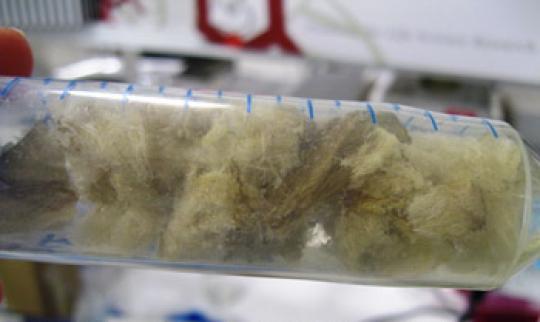
The aqueous kawakawa extract after being extracted, centrifuged, and then freeze dried
Chris's project investigating the anti-inflammatory properties of kawakawa leaf extracts
Go to NZQA, New Zealand Scholarship Technology and select Scholarship Exemplar to download Chris's full report, Reflective biotech report on anti-inflammatory properties of kawakawa.
Collecting the plant material
Kawakawa is readily available. Chris collected the plant material for his project from various sites, including his own garden.
Within traditional rongoā Māori, the kawakawa leaves would be collected from the part of the plant that is facing east, gets the morning sun, and has been chewed by a caterpillar.
Chris chose not to follow this protocol because it would have limited the scope of his findings, and harvesting the leaves to this strict criteria would have been difficult. But he believes it would be interesting to conduct further research to determine whether harvesting to this criteria would in fact produce a more potent extract.
Extracting the medicinal compound
Chris trialled seven extraction methods, based on literature and expert advice in the areas of both science and rongoā Māori.
Chris’s knowledge of how to extract a medicinal compound from a plant was limited and it took time and practice to extract successfully. The first extractions were not successful – the resulting liquid was not homogenous in either nature or colour.
After trialling the seven extraction methods, Chris chose two to take through to biological testing – the aqueous solution methodology and the chloroform-methanol-water (CMW) extraction method.
The aqueous solution methodology was pursued because it was based on the technique used by practitioners of rongoā Māori. For this method, the leaves are infused in hot water.
Aqueous extraction: The kawakawa leaves have been cut up and added to boiling water and then sealed. After 30 minutes (as the water cools), the leaves are removed.
The chloroform-methanol-water (CMW) extraction method was chosen based on scientific literature and advice from Associate Professor David Greenwood of Auckland University.
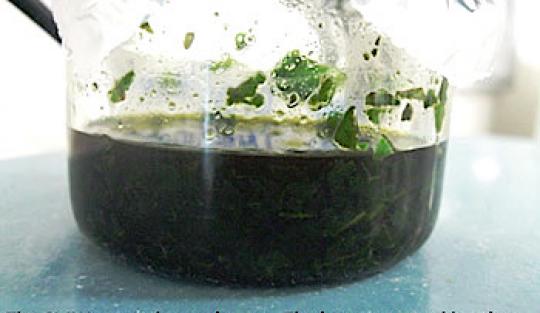
CMW extraction: The leaves are soaking in the CMW solvent before being centrifuged or freeze dried.
The two extraction methods were trialled and refined further. Then the two extracts were freeze dried so they could be resolubilised and added to cell cultures.
Testing for cytotoxicity – cell death
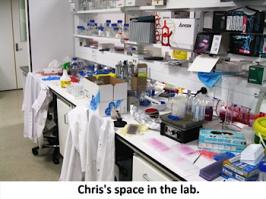
It was important that no cell death occurred when specific concentrations of the kawakawa extract were applied to the cells because this would give false negative or false positive results.
Three tests for cytotoxicity were carried out to prove that none of the concentrations of kawakawa extract used were cytotoxic.
- The MTT assay showed how cell viability varied as the kawakawa extract concentration varied.
- The Trypan Blue Cell Viability assay showed whether a particular concentration of the extract was cytotoxic.
- The flow cytometry assay provided another measure of cell viability to confirm the results of the previous assays.
Chris carried out the MTT Cell Viability assay and the Trypan Blue assay.
The third assay using flow cytometry was used to ensure accuracy (but it wasn’t necessary to understand the potential cytotoxic effects of the kawakawa extract). This assay was carried out by a laboratory expert because the technique required someone with highly refined laboratory skills.
Testing the anti-inflammatory effect of the extract
Three inflammatory markers were measured, nitric oxide (NO), Tumor necrosis factor alpha (TNF-a), and Interleukin 6 (Il-6).
Nitric oxide is an inflammatory marker. A reduction in the concentration of NO produced by cells exposed to kawakawa extract suggests that the extract has in-vitro anti-inflammatory activity. TNF-α and Il-6 are two inflammatory cytokines that indicate inflammation. A reduction in the concentration of these inflammatory markers would suggest that the extract has anti-inflammatory activity.
Chris Ryan
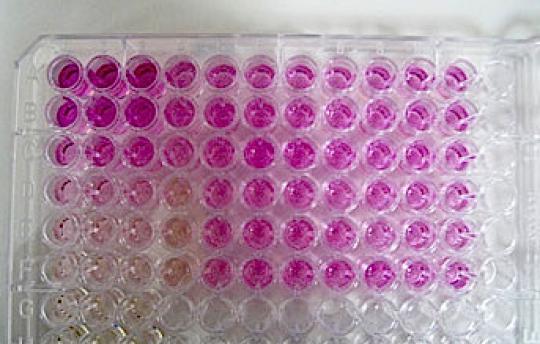
Nitric oxide assay: The three columns on the left are the controls. The other columns are the experimental samples. The absorbance is measured on a photometer and the controls allow for the production of nitric oxide to be calculated.
Chris carried out the testing for nitric oxide. He set up and observed the TNF-a and Il-6 assays, which were carried out by experts in the laboratory using flow cytometry. The TNF-a and Il-6 assays provided information that added depth and breadth to the information Chris had gained in conducting the NO assays.
The cells were treated using a polysaccharide (LPS) known to induce the cells' inflammatory response. A control was established and then the kawakawa extract added to the cells.
Any reduction in the concentration of the inflammatory markers in the experimental samples – compared to the control – indicated that the extract had anti-inflammatory activity.
Results
The outcomes were a kawakawa extract that showed in-vitro anti-inflammatory activity and a system for testing the anti-inflammatory properties of a plant extract.
System for testing the anti-inflammatory properties of a plant extract
The system Chris developed for testing the anti-inflammatory properties of plant extracts had the following attributes:
- Extraction of the plant material
- Testing of the cell viability
- establishes the concentration at which there is no cytotoxicity
- uses the MTT Assay, the Trypan Blue Assay, and flow cytometry
- is based on standard methodology
- Anti-inflammatory testing
- uses the concentrations that are not cytotoxic
- tests the anti-inflammatory properties of the extract using the NO, TNF-a, and Il-6 assays
- is based on standard methodology
Kawakawa extract
The aqueous extract Chris developed was fit for purpose, showing in-vitro anti-inflammatory activity. The CMW extract did not show any anti-inflammatory activity.
Chris found that the aqueous extract could be considered for development into various products with different concentrations, such as a balm, a drink, and a beverage. Clinical trials would need to be carried out to determine the effectiveness of these products.
Feedback from Ngā Pae o te Māramatanga
Ngā Pae o te Māramatanga, New Zealand's Māori Centre of Research Excellence, provided advice and funding for Chris to pursue his research. The feedback from Ngā Pae o te Māramatanga showed that they were most impressed with the results of the research:
The knowledge of the Māori peoples has contributed to new frontiers of knowledge and health. This is because the biotechnological outcomes of this project show that the traditional uses of kawakawa in rongoā are supported by scientific evidence. This technological outcome supports traditional Māori cultural practice with scientific evidence. Furthermore, the extract that demonstrated the anti-inflammatory activity (the aqueous extract) was premised on Māori knowledge. This biotechnological outcome adds new knowledge to the body of literature and so creates a new “frontier” of knowledge.
Ngā Pae o te Māramatanga
Fitness for purpose in its broadest sense
Chris clearly addressed the concept of fitness for purpose in its broadest sense throughout the project.
Fitness for purpose in its broadest sense is a concept described at level 8 of the curriculum and also within the scholarship standard. (See the NZQA website at Scholarship Performance Standard, Technology.) One of the subject specific definitions for the standard states:
Technological experiences will include:
- undertaking technological practice to develop a technological outcome(s) that is justified as fit for purpose in the broadest sense and shows elements of elegance and/or originality.
Fitness for purpose in its broadest sense relates to the outcome itself as well as to the practices used to develop the outcome. Beyond ensuring that the outcome itself met the requirements of the thoroughly researched and developed brief, Chris addressed this notion in the following ways.
Sustainability
Kawakawa leaves are a sustainable resource. Kawakawa is native to New Zealand, not under threat, and grows naturally in bush and domestic settings.
Practices used in manufacture
The methodology Chris used to extract the medicinal compound was fit for purpose because the aqueous solution methodology was traditionally used in rongoā. Testing the cytotoxicity of the extracts was very important for ensuring that the products were “fit for purpose” because it ensured that the results were scientifically valid.
Cultural appropriateness of trialling techniques and ethical testing practices
One of the reasons for conducting research into rongoā and the uses of kawakawa in rongoā was to gain an understanding of the Māori perspective towards medicine, kawakawa, and the treatment of ailments. The project was based on the traditional uses of kawakawa and it was essential to engage with rongoā in a way that was respectful.
Chris was supported financially by Ngā Pae o te Māramatanga and they provided guidance and advice on procedures during the trialling and testing. Discussions were conducted with Professor Mike Walker, Dr Rebekah Fuller, Dr Joe Te Rito, and Dr Marilyn McPherson, as to how they personally, and Māori in general, use kawakawa and view its position in rongoā. This provided insight into how to fuse mātauranga (knowledge) Māori and science in the extraction methodology.
The use of the aqueous solution to remove the medicinal compound was based on the processes used in rongoā. Chris spoke at length to people at Nga Pae about their practices.
In his report, Chris noted that neither of the previous scientific studies of kawakawa had used an aqueous extract or discussed the techniques used in rongoā. Chris’s work is a reminder of the importance of valuing traditional cultural practices and not assuming they are scientifically or technologically invalid.
Part of the funding agreement with Ngā Pae o te Māramatanga was to provide ongoing communication and reporting about the progress and results of the project. The agreement also required that knowledge gained from the project would not be patented or commercialised because it is important that this knowledge is accessible and available to all Māori.
Life cycle and ultimate disposal of the outcome
The extract was stored at 4°C for a number of weeks and remained stable. When it came to disposal, the solids dissolved in water were thrown away in bags that were sent to be autoclaved (sterilised in the School of Biological Sciences facilities) and then disposed of.
Health and safety
Health and safety is an important part of lab work. The work was conducted in a PC-2 level lab, which means that there are established processes around the disposal of cell cultures, the treatment of waste, and ensuring that the cells were kept in a sterile environment. As a school student with very little lab experience, these were all processes that Chris needed to learn.
Consideration of the outcome's social acceptability
Chris suggested that a rongoā user or practitioner now has scientific support for the use of kawakawa. Some of the general public have a limited understanding of rongoā and it can lack credibility. The primary technological outcome could lead to a broader acceptance of the medicinal properties of kawakawa and of rongoā Māori.
Scholarship and other successes

Beatrice Copestake, HOD Technology at Howick College, believes that Chris’s natural humility allowed him to access huge support as he progressed in this project.
Beatrice guided Chris in engineering his scientific report into the format required for a technology scholarship submission. In hindsight, Beatrice wondered if an oral submission to go with the portfolio would have provided the additional evidence to achieve an outstanding scholarship.
As well as scholarship in technology, Chris was awarded a Gold Crest Award for his work. His teacher Sally Barclay says that CREST is a great opportunity for students to extend themselves in something that they are really passionate about.
Chris won the premier award at the Manukau Region Science Fair and attended the subsequent Realize the Dream event. He won the American Ambassadors Outstanding Award at this event and represented New Zealand at the International Science and Engineering Fair in California in May 2014. Chris was also top scholar at Howick College in 2013.
Chris is now studying law and science at Auckland University.
What next with kawakawa?
Chris explains his thinking about future possibilities with this work:
"The product we made was an aqueous kawakawa extract that at specific concentrations demonstrated an in-vitro (in-cell culture) inflammatory response from a specific cell culture type.
There are a plethora of issues in trying to translate this into an invivo (in-body) response. A response in cells does not necessarily translate into a response in the human body. For example, it either has to be able to penetrate the skin and be absorbed or survive the stomach acid and hopefully be absorbed into the blood in the intestine.
I think in terms of future steps, the exciting thing is that my research demonstrates that there are many opportunities in investigating kawakawa. These could include adding the extract to a balm or beverage that could be applied to the skin or proceeding down a more pharmaceutical route and trying to isolate a the bioactive compound and perhaps trying to synthesise it so that it could be mass produced."
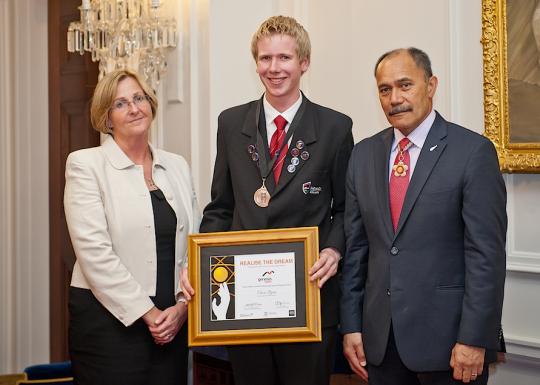
Support for the project
Chris is a public speaker and debater and worked to develop effective working relationships with an extensive support group.
- Chris secured funding from Ngā Pae o te Māramatanga, New Zealand's Māori Centre of Research Excellence to pursue his research.
- Chris was supported by the LENScience program at the Liggins Institute at the University of Auckland and received and a LENScience Award.
- Chris's project was a Gold CREST project.
- Dr John Taylor at the School of Biological Sciences at the University of Auckland mentored Chris and he was supported by his science teacher at Howick College, Sally Barclay.
- Beatrice Copestake, HOD Technology at Howick College guided Chris in developing and presenting his project for a Technology Scholarship.
- Chris was awarded scholarship in Technology and a Gold Crest Award for his work in this project. Carol Pound supported Chris as a Royal Societies facilitator for the Gold Crest project.

